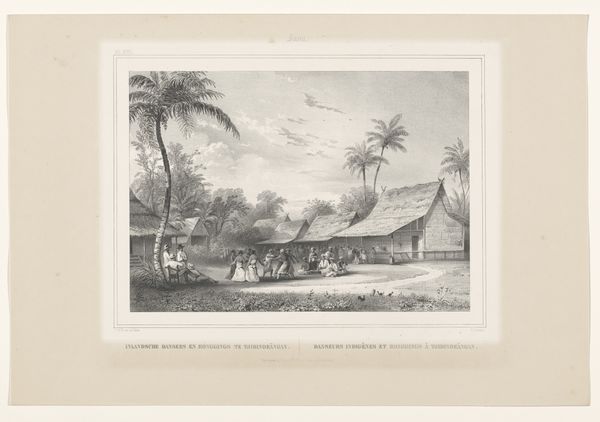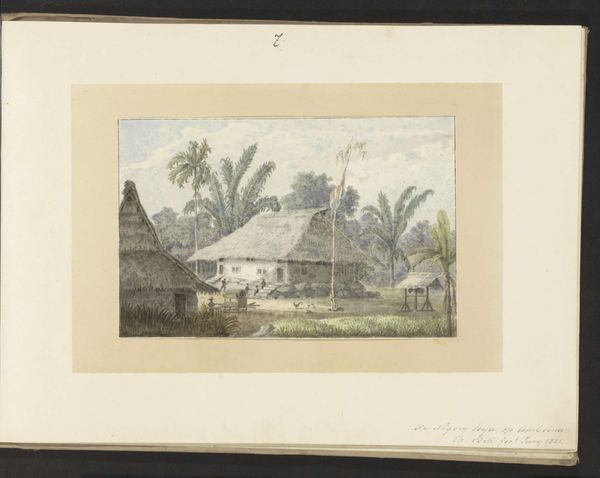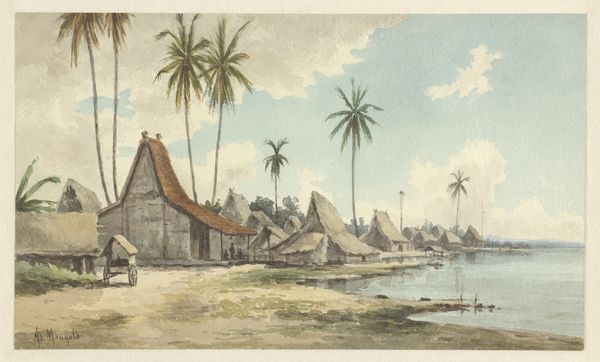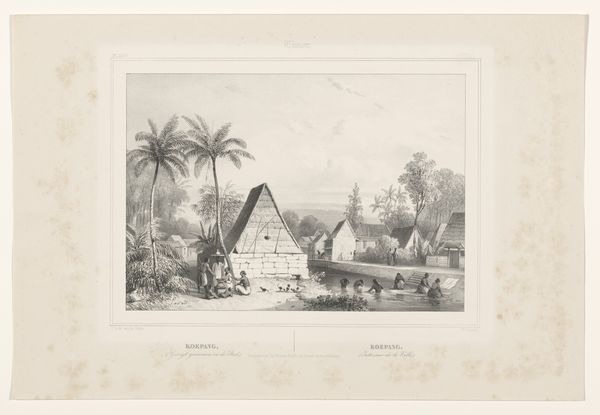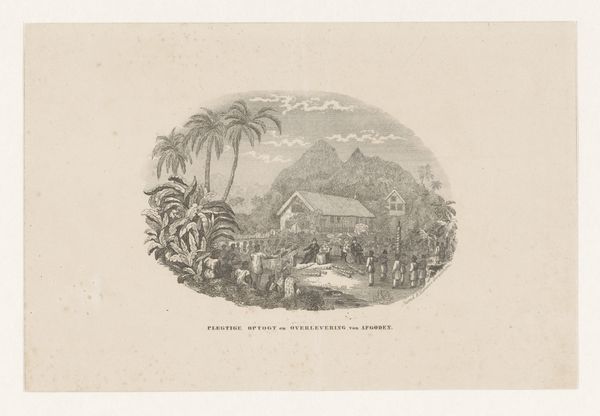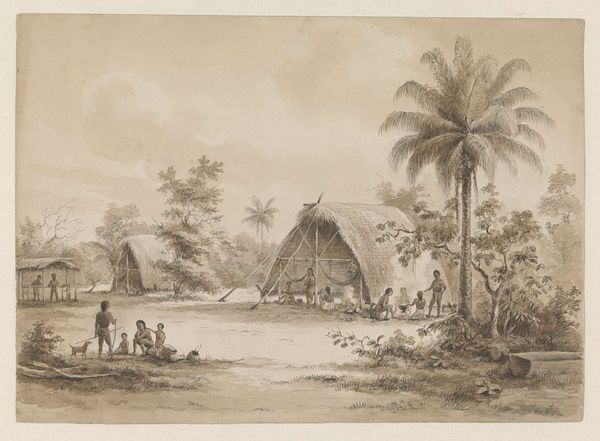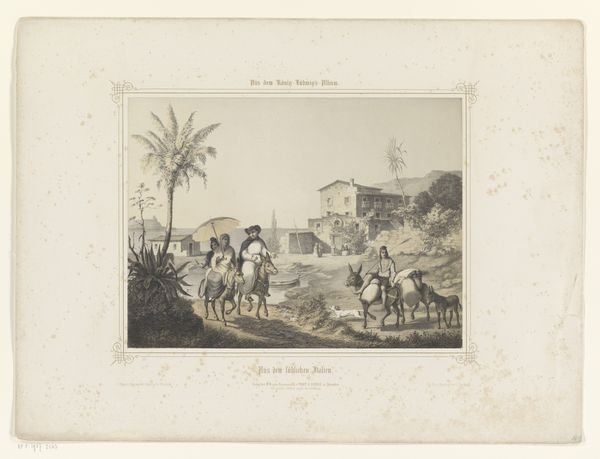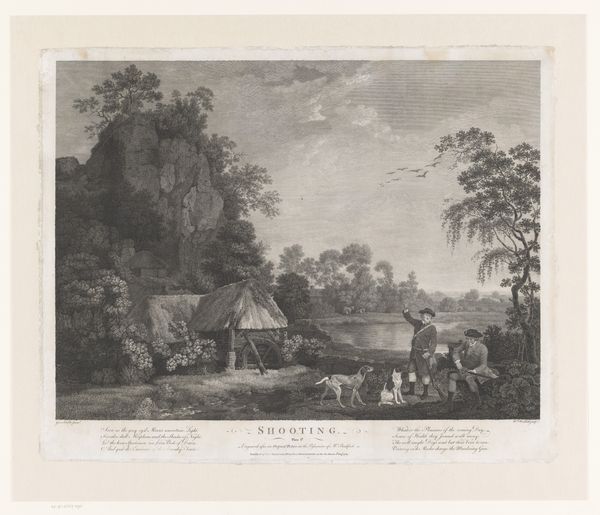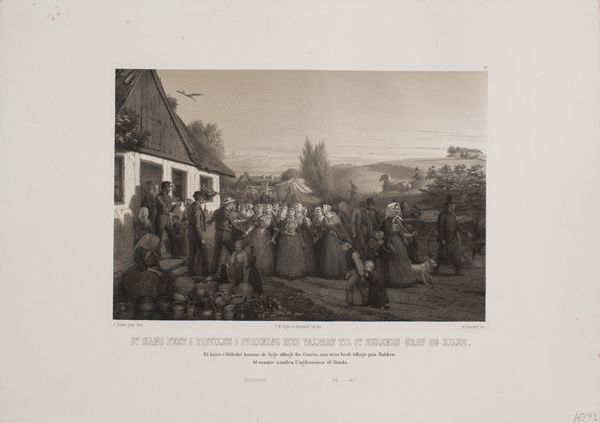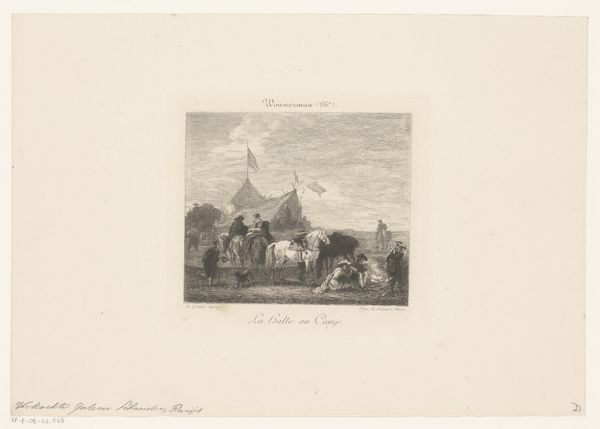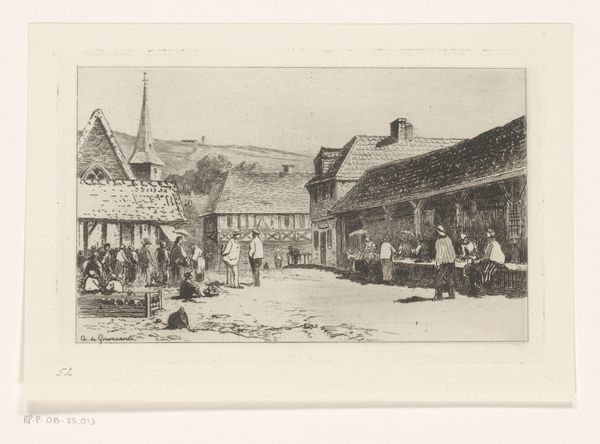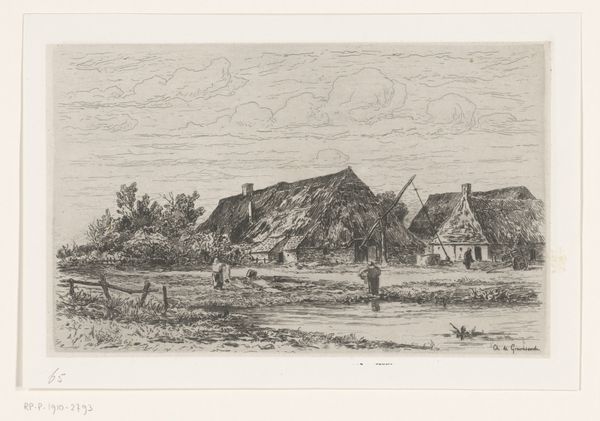
print, engraving
# print
#
landscape
#
orientalism
#
engraving
#
realism
Dimensions: height 340 mm, width 510 mm
Copyright: Rijks Museum: Open Domain
Curator: This is "View of a Malay Village in Indonesia," an engraving by Paulus Lauters, created between 1843 and 1845. It's currently held in the Rijksmuseum collection. Editor: What immediately strikes me is the light. Even without color, there's a tangible sense of humidity and a distinct, almost shimmering atmosphere that feels quite tropical. Curator: The composition is fascinating, isn’t it? Lauters uses a fairly high horizon line which then allows us to see directly into the bustling village life and really draw in the architectural structure in place here. Editor: Precisely. Look at how the artist renders the thatched roofs, presumably made from locally sourced materials like palm leaves. And observe how the structure and texture informs the building construction itself and subsequently affects the social interactions of the town. This speaks volumes about labor, resources, and vernacular building practices of the time. Curator: Absolutely. We can't ignore how it speaks to Orientalist themes too. There's this push and pull between depicting the "exotic" other while also anchoring it within the aesthetic conventions familiar to a European audience. See the detailing on the clothing that feels incredibly attentive? This adds to the overall impression. Editor: Indeed. But let’s think about how the printmaking process itself impacts meaning. The engraving transforms this scene into a commodity. Lauters translates Indonesian village life for a European audience through laborious production, ready for mass consumption and framing colonial perceptions. Curator: Good point, how do we balance that though. This is a lens through which we get a snapshot in time but do the conventions ultimately speak over reality? I guess this becomes a constant contextual back-and-forth? Editor: I suppose you're always balancing inherent bias with intended record and how material practices affect the perceived reality of the artist’s subject. That in itself can open up a plethora of interesting dialogues. Curator: Yes, it's in decoding these layers of visual and cultural meaning that we really engage with the work. It offers us a wealth of formal devices which ultimately question our role as interpreter. Editor: A material product viewed now under a materialist reading offers a nuanced understanding. Thank you!
Comments
No comments
Be the first to comment and join the conversation on the ultimate creative platform.
